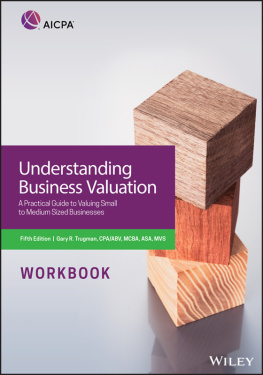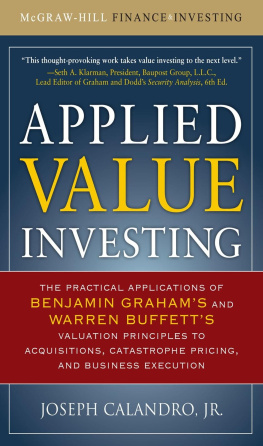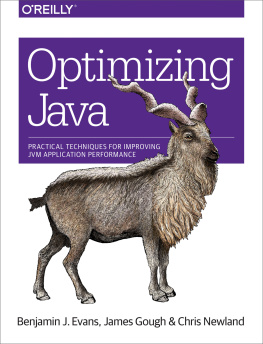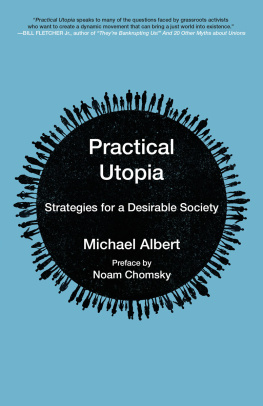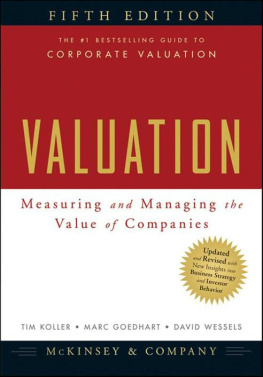Praise for Applied Value Investing
Calandros clever application of value investing principles to corporate decision-making could transform how businesses operate and what business school students are taught. This thought-provoking work takes value investing to the next level.
Seth A. Klarman, president, The Baupost Group, L.L.C.; lead editor of Graham and Dodds Security Analysis, Sixth Edition; and author of Margin of Safety
After seventy-five years, Graham and Dodd remains the true North Star for those seeking the Rosetta Stone to unlock values. Professor Joseph Calandro adopts Graham and Dodds fundamental premises and uses them to focus on new dynamics.
Mario J. Gabelli, CFA, chairman and CEO, GAMCO Investors, Inc.
Calandros application of Graham and Dodd principles outside the traditional realm of value investing involves multi-disciplinary thinking, a necessary skill for constructively framing and reframing the investment landscape in todays chaotic world. Particularly interesting is Calandros chapter on the relationship between Graham and Dodds discussion of the market valuation cycle of greed and fear, and the top down macro ideas of George Soros. In essence, Calandro shows how Mr. Markets bipolar psychology can be linked to Soros concepts of reflexivity and feedback between conditions on Wall Street and Main Street. Given the wild downward oscillations we have experienced over the last year, every value investor should be able to weave these two investment approaches together to understand when and why a cycle develops, and where market behavior diverges significantly from the fundamentals.
Mitchell R. Julis, co-chairman and co-CEO, Canyon Partners, L.L.C.
Joseph Calandros Applied Value Investing is the most important business book of our time. Today our global economy is in the throes of major readjustment, and this books analysis is a critical navigation tool to help executives and investors find and create value. Calandro extends the classic work of Graham and Dodd to evaluate mergers and acquisitions, catastrophe-based alternative investment, and most importantly integrates it with a strategic framework for managers to determine if they are truly creating value above their cost of capital, risk adjusted. It is also well written, practical, and an enjoyable read.
Dr. John J. Sviokla, vice chairman, Diamond Management & Technology Consultants, and former associate professor of Harvard Business School
For anyone interested in the interface between strategy and finance CEOs, CFOs, operations executives, planners, investors, analysts, and risk managersApplied Value Investing by Joseph Calandro, Jr. offers two key lessons that are potentially extremely rewarding. One is that business leaders can find new sources of competitive advantage if they learn to think like highly successful investors. The other is that investors and analysts can gain valuable insights if they study how a company achieves the creative interaction of strategy, resource allocation, performance management, and risk management. In other words, investors should learn to think like astute business leaders. Calandros groundbreaking book integrates these two lessons into a holistic and practical business framework, which can be used to either assess or manage a business.
Robert M. Randall, editor, Strategy & Leadership, and coauthor of The Portable MBA in Strategy
This is an extremely smart book. The three chapters on M&A alone are worth the price of admission. If executives will adopt the discipline that Joseph Calandro lays out, they will avoid many, many costly mistakes.
Paul B. Carroll, coauthor of Billion-Dollar Lessons: What You Can Learn from the Most Inexcusable Business Failures of the Last 25 Years
Joseph Calandro successfully applies the modern approach to Graham and Dodds investment valuation. The book is a must read for all Graham and Dodd followers, and valuation practitioners.
Patrick Terrion, principal, Founders Capital Management, and author of The Company You Keep: A Commonsense Guide to Value Investing
A useful addition to every value investors library.
Bruce Greenwald, Robert Heilbrunn Professor of Finance and Asset Management, Columbia Business School
You will enjoy learning from real world cases how to apply the investment principles of the legendary Benjamin Graham and Warren Buffett. Because of outstanding writing and some fascinating corporate and financial history, this book is an excellent way to learn how to be a successful investor.
Dr. Thomas J. OBrien, professor of finance, University of Connecticut, and author of International Finance: Corporate Decisions in Global Markets
APPLIED VALUE INVESTING
APPLIED VALUE INVESTING
THE PRACTICAL APPLICATIONS OF
BENJAMIN GRAHAMS AND
WARREN BUFFETTS
VALUATION PRINCIPLES TO
ACQUISITIONS, CATASTROPHE PRICING,
AND BUSINESS EXECUTION
JOSEPH CALANDRO, JR.


Copyright 2009 by Joseph Calandro, Jr. All rights reserved. Except as permitted under the United States Copyright Act of 1976, no part of this publication may be reproduced or distributed in any form or by any means, or stored in a database or retrieval system, without the prior written permission of the publisher.
ISBN: 978-0-07-162819-8
MHID: 0-07-162819-3
The material in this eBook also appears in the print version of this title: ISBN: 978-0-07-162818-1, MHID: 0-07-162818-5.
All trademarks are trademarks of their respective owners. Rather than put a trademark symbol after every occurrence of a trademarked name, we use names in an editorial fashion only, and to the benefit of the trademark owner, with no intention of infringement of the trademark. Where such designations appear in this book, they have been printed with initial caps.
McGraw-Hill eBooks are available at special quantity discounts to use as premiums and sales promotions, or for use in corporate training programs. To contact a representative please e-mail us at bulksales@mcgraw-hill.com.
This publication is designed to provide accurate and authoritative information in regard to the subject matter covered. It is sold with the understanding that neither the author nor the publisher is engaged in rendering legal, accounting, futures/securities trading, or other professional service. If legal advice or other expert assistance is required, the services of a competent professional person should be sought.
From a Declaration of Principles jointly adopted
by a Committee of the American Bar
Association and a Committee of Publishers
TERMS OF USE
This is a copyrighted work and The McGraw-Hill Companies, Inc. (McGraw-Hill) and its licensors reserve all rights in and to the work. Use of this work is subject to these terms. Except as permitted under the Copyright Act of 1976 and the right to store and retrieve one copy of the work, you may not decompile, disassemble, reverse engineer, reproduce, modify, create derivative works based upon, transmit, distribute, disseminate, sell, publish or sublicense the work or any part of it without McGraw-Hills prior consent. You may use the work for your own noncommercial and personal use; any other use of the work is strictly prohibited. Your right to use the work may be terminated if you fail to comply with these terms.
THE WORK IS PROVIDED AS IS. McGRAW-HILL AND ITS LICENSORS MAKE NO GUARANTEES OR WARRANTIES AS TO THE ACCURACY, ADEQUACY OR COMPLETENESS OF OR RESULTS TO BE OBTAINED FROM USING THE WORK, INCLUDING ANY INFORMATION THAT CAN BE ACCESSED THROUGH THE WORK VIA HYPERLINK OR OTHERWISE, AND EXPRESSLY DISCLAIM ANY WARRANTY, EXPRESS OR IMPLIED, INCLUDING BUT NOT LIMITED TO IMPLIED WARRANTIES OF MERCHANTABILITY OR FITNESS FOR A PARTICULAR PURPOSE. McGraw-Hill and its licensors do not warrant or guarantee that the functions contained in the work will meet your requirements or that its operation will be uninterrupted or error free. Neither McGraw-Hill nor its licensors shall be liable to you or anyone else for any inaccuracy, error or omission, regardless of cause, in the work or for any damages resulting there from. McGraw-Hill has no responsibility for the content of any information accessed through the work. Under no circumstances shall McGraw-Hill and/or its licensors be liable for any indirect, incidental, special, punitive, consequential or similar damages that result from the use of or inability to use the work, even if any of them has been advised of the possibility of such damages. This limitation of liability shall apply to any claim or cause whatsoever whether such claim or cause arises in contract, tort or otherwise.
Next page

